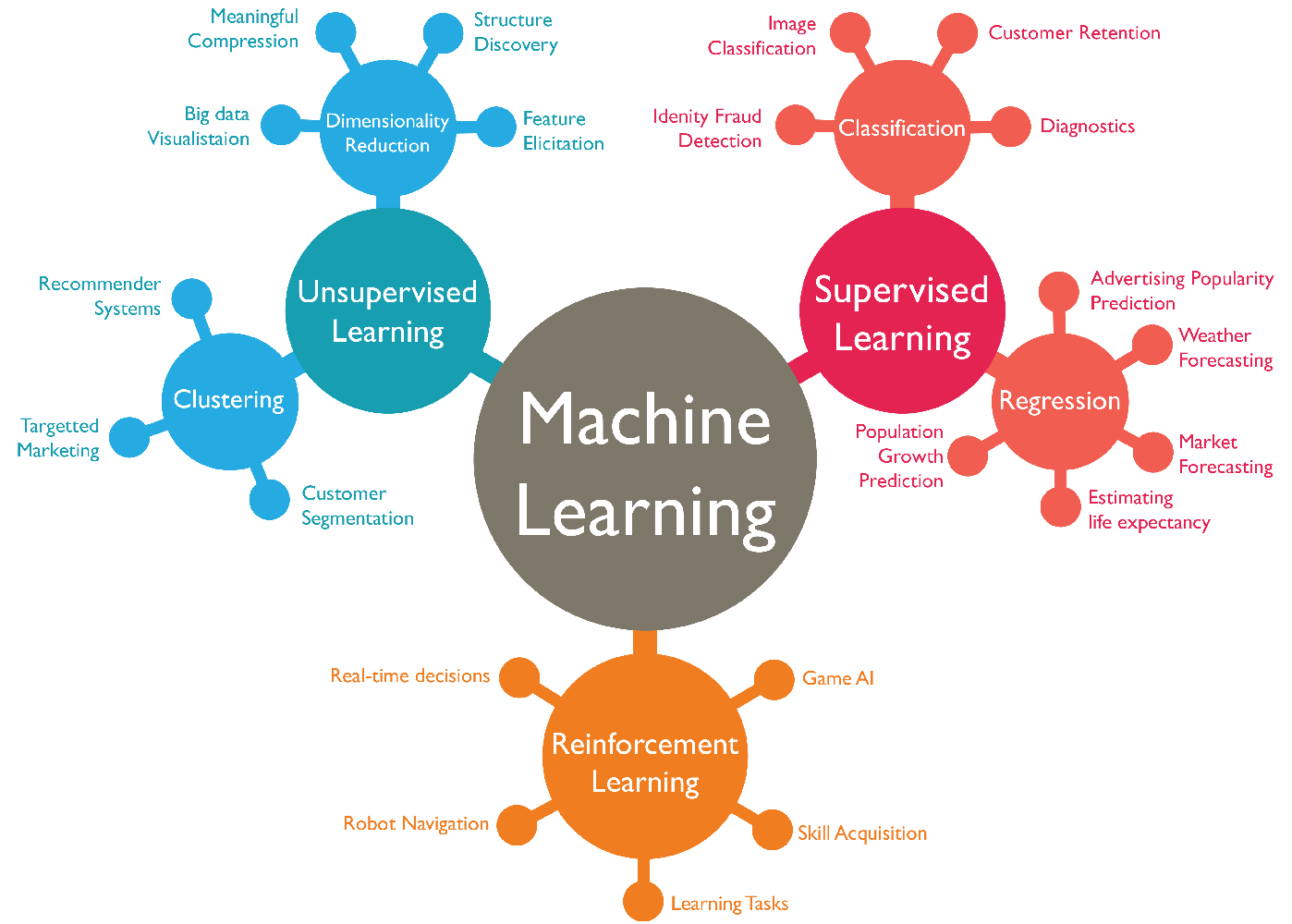Introduction:
In today's data-driven world, machine learning algorithms have emerged as powerful tools for analyzing and making predictions from vast amounts of data. These algorithms have revolutionized industries such as healthcare, finance, marketing, and more. In this blog post, we will provide an overview of the different types of machine learning algorithms, including supervised learning, unsupervised learning, and reinforcement learning. Additionally, we will explore real-world case studies to illustrate their practical applications.
Supervised Learning:
Supervised learning algorithms learn from labeled data, where the input features and corresponding target outputs are provided. The goal is to learn a mapping function that can predict the output for new, unseen inputs accurately. Popular supervised learning algorithms include linear regression, decision trees, support vector machines (SVM), and neural networks. These algorithms are widely used for applications like spam filtering, sentiment analysis, and image recognition.
Real-World Case Study: Image Classification with Convolutional Neural Networks (CNN)
In the field of computer vision, CNNs have shown remarkable success in image classification tasks. For instance, the ImageNet Large Scale Visual Recognition Challenge (ILSVRC) used CNNs to classify and localize objects within images, achieving unprecedented accuracy. The use of supervised learning algorithms, particularly CNNs, has paved the way for numerous applications like self-driving cars, medical image analysis, and facial recognition.
Unsupervised Learning:
Unsupervised learning algorithms work with unlabeled data, extracting patterns and relationships without any predefined target outputs. These algorithms aim to discover hidden structures within the data, such as clusters or associations. Clustering algorithms, such as k-means and hierarchical clustering, identify groups of similar data points. Dimensionality reduction techniques, like principal component analysis (PCA) and t-SNE, help visualize and simplify complex datasets.
Real-World Case Study: Customer Segmentation for Marketing
In marketing, unsupervised learning algorithms enable businesses to segment their customers based on similarities and preferences. By clustering customers with similar purchasing behavior, companies can tailor marketing campaigns to specific groups. For example, Netflix utilizes unsupervised learning to categorize users into different taste profiles, enabling personalized recommendations and improving user satisfaction.
Reinforcement Learning:
Reinforcement learning involves an agent interacting with an environment to learn optimal actions based on rewards and punishments. The agent learns by trial and error, optimizing its behavior through a process of exploration and exploitation. Reinforcement learning has applications in robotics, gaming, and autonomous systems. Popular algorithms in this category include Q-learning and deep reinforcement learning.
Real-World Case Study: AlphaGo's Victory in Go
In 2016, Google's DeepMind developed AlphaGo, an artificial intelligence program that defeated the world champion Go player. AlphaGo combined deep neural networks and reinforcement learning algorithms to master the complex game of Go. This achievement showcased the power of reinforcement learning and its potential for solving real-world problems with high-dimensional state spaces and complex decision-making.
Conclusion:
Machine learning algorithms, such as supervised learning, unsupervised learning, and reinforcement learning, have transformed the way we analyze data and make predictions. They enable businesses to uncover valuable insights, improve decision-making, and automate complex tasks. From image classification to customer segmentation and game-playing, these algorithms have found practical applications across various domains. As technology continues to advance, machine learning algorithms will undoubtedly play an even more significant role in shaping our future.
Over the next few blogs, we will dive deep into each one of these to learn more about them.
References:
ImageNet Large Scale Visual Recognition Challenge (ILSVRC): http://www.image-net.org/challenges/LSVRC/
Netflix: Using AI to Optimize Streaming Quality: https://netflixtechblog.com/using-ai-to-optimize-streaming-quality-at-netflix-9651263ef09f
DeepMind: AlphaGo: https://deepmind.com/research/case-studies/alphago-the-story-so-far
#MachineLearning #DataScience #AI #PredictiveAnalytics #RealWorldApplications



